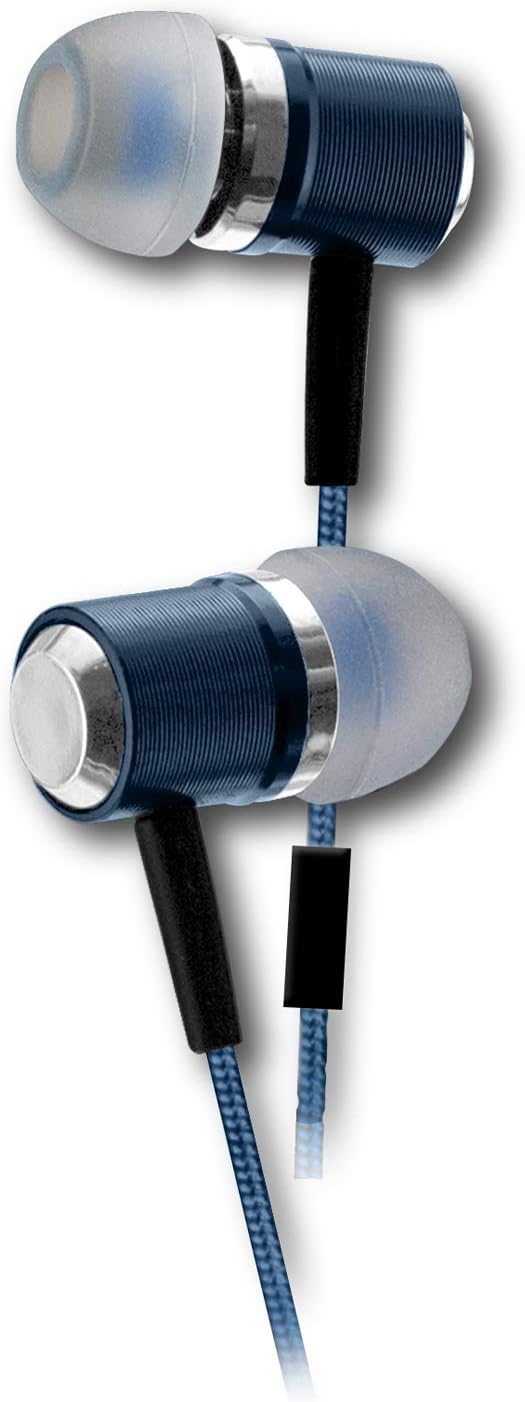Betron RK300 In Ear Headphones - Affordable Quality
Update on July 1, 2025, 3:53 p.m.
There’s a universal magic in the simple act of putting on a pair of earphones. The world’s cacophony fades, replaced by a universe of your own choosing. For some of us, it’s a memory tied to the satisfying click and whir of a Walkman cassette player, the first time we realized music could be a private landscape. For others, it’s the iconic white cord that became a symbol of a generation. Today, that magic is more accessible than ever. But have you ever wondered how it truly works? How can a device so small, and often so affordable, create a world so vast?
Let’s embark on a journey, using a simple pair of wired earbuds like the Betron RK300 as our guide. This isn’t a product review; it’s an exploration. We’ll peel back the layers of plastic and wire to reveal the elegant physics and engineering that allow you to carry a private concert hall in your pocket.

Act I: Building the Walls – The Gentle Art of Isolation
Before any music plays, the first task of any great venue is to control the environment. A world-class symphony hall is defined as much by the sounds it keeps out as the music it holds within. Your earphone is no different. In our endlessly noisy world, the first step to creating your personal sonic space is to build the walls. This is the art of Passive Noise Isolation.
Unlike its electronic cousin, active noise cancellation, which is like having digital security guards actively ejecting unwanted sounds, passive isolation is pure architecture. It’s the simple, profound act of closing a door. When you choose one of the silicone tips that comes with your earphones and find the size that fits your ear canal perfectly, you are creating an acoustic seal.
This seal is the foundation of your concert hall. It physically blocks a significant portion of high-frequency external noises—the office chatter, the hiss of traffic, the drone of an airplane cabin. But it does something even more critical for your music: it traps the sound waves produced by the earphone, especially the low-frequency bass notes. Without this seal, bass leaks out into the world, sounding thin and distant. With the seal, the bass is contained, allowed to resonate and develop, giving your music a tangible fullness and warmth. Finding that perfect fit isn’t just about comfort; it’s the moment you finish constructing the walls of your private venue.

Act II: The Performer Takes the Stage – The Tiny, Mighty Engine of Sound
With the hall now silent and ready, it’s time for the performer to take the stage. Inside each earbud lies the heart of the operation: a 9mm dynamic driver. To appreciate this marvel, imagine the challenge faced by early audio pioneers: taking the technology of a room-sized loudspeaker and shrinking it to the size of a pea.
A dynamic driver is a masterpiece of miniature engineering, operating on a principle of electromagnetism that hasn’t changed much in a century. A tiny, powerful magnet, a coil of ultra-fine wire, and a paper-thin diaphragm work in concert. When the electrical signal of your music flows through the coil, it becomes a tiny electromagnet, rapidly pulsing against the permanent magnet. This causes the diaphragm to vibrate with incredible precision, pushing air and creating the sound waves that are the very language of music.
Think of this 9mm driver as a world-class vocalist with an astonishing range. The specifications for a device like the RK300 often list a Frequency Response of around 18Hz to 22500Hz. This is the vocalist’s range. The accepted spectrum of human hearing is roughly 20Hz to 20,000Hz. This means our tiny performer can sing notes lower and higher than most of us can even perceive, ensuring that from the deepest sub-bass rumble in an electronic track to the highest, shimmering harmonics of a violin, no part of the performance is left behind. This is why even affordable earphones can produce a sound that feels complete and “bass-driven”—the engine inside is designed for a full-throated, powerful delivery.

Act III: The Unbroken Connection – From the Source to Your Soul
Our performer is singing flawlessly inside a perfectly isolated hall. But how does that pure performance travel from your phone or music player to the stage? This final journey is entrusted to the unsung heroes of the audio chain: the cable and the connector.

The cable is the nervous system, transmitting the delicate electrical impulses of the music. A well-designed cord, often made of durable and flexible PVC, is built to resist the tangles and strains of daily life. But the most critical moment in this journey is the final handshake, the point where device and earphone meet: the 3.5mm jack.
You’ll notice that this connector is often gold-plated. This isn’t mere decoration; it’s a crucial scientific choice. Gold is an excellent electrical conductor, but more importantly, it is incredibly resistant to corrosion and oxidation. Over time, lesser metals can tarnish, creating a microscopic layer of resistance that can degrade the audio signal, introducing static or weakening the sound. The sliver of gold on that jack is a steadfast guardian, ensuring the signal that leaves your device is the exact same signal that arrives at the driver. It’s a commitment to purity in the last, vital centimeter of the journey.

Epilogue: The Democratization of a Private Audience
And so, our journey ends. We’ve seen how centuries-old principles—acoustic architecture, electromagnetism, and material science—converge in a device you can hold between two fingers. The beauty of something like the Betron RK300 isn’t that it reinvents the wheel. Its elegance lies in the successful optimization of these proven technologies, making a quality personal audio experience something that is no longer a luxury, but a staple.

The next time you plug in your earphones and press play, take a moment. You’re not just blocking out the world. You are an architect building a silent hall, a promoter staging a private concert with a world-class performer, and a technician ensuring an unbroken connection. You are curating your own reality, one soundwave at a time. And now, you know the quiet, brilliant science that makes it all possible.



























































